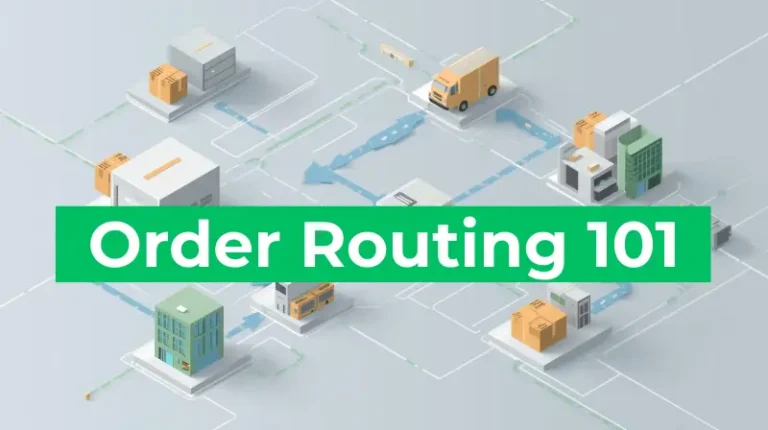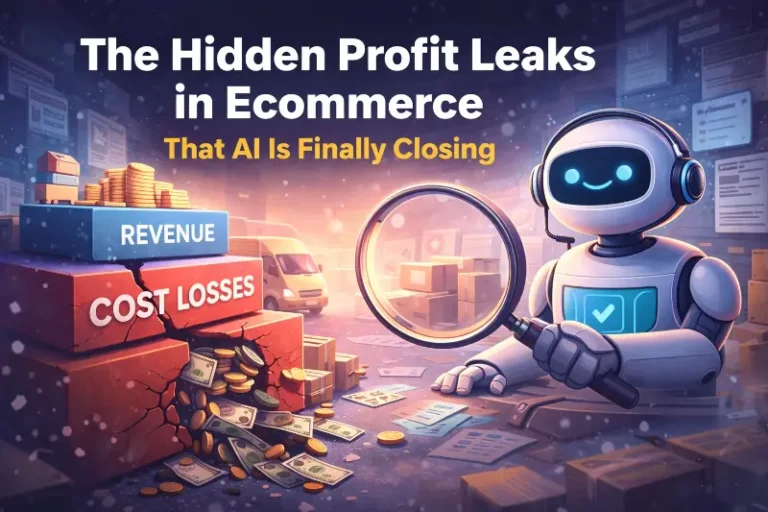Flexport’s $5,000 Monthly Minimum: What It Really Means and How to Respond

Last updated on August 14, 2025

In this article
 6 minutes
6 minutes
- What Changed (And Why Timing Matters)
- Who’s Most Affected
- Why Flexport Would Make This Move (The Business Logic)
- The Part Nobody Says Out Loud: Indecision Is The Most Expensive Option
- How To Decide: A Quick Financial Model That Actually Helps
- What To Look For In A Modern Fulfillment Partner (A Practical Checklist)
- Migration Without The Mayhem (A Realistic 30/60/90)
- The Bigger Strategic Takeaway
- Bottom Line
- Frequently Asked Questions
Flexport’s shock move to a $5,000 monthly minimum fee has me, and a lot of ecommerce folks, doing double takes. When a fulfillment partner suddenly wants five grand a month just to play ball, you know something big is up. Is it a cash grab, a pivot to enterprise clients, or a bit of both? All I know is it’s making small and mid-sized sellers very nervous, right on the cusp of peak season. Let’s connect the dots on why the change is happening, who’s affected, and how to make a smart, low-risk pivot if it’s time to move.
What Changed (And Why Timing Matters)
Flexport previously introduced a lower monthly minimum ($500 that went into effect in July 2025); now the new floor is $5,000 per month starting in 2026. The practical effect: if total eligible fulfillment charges don’t hit $5K in a given month, the account pays the difference. For high-volume programs, this is noise. For long-tail or seasonal brands, it’s a budget line item that can overshadow margins, particularly in shoulder months before and after peak.
The timing matters. Q4 is when nobody wants to switch warehouses, yet Q1 is when many realize they can’t carry a $5K retainer through softer months. The risk isn’t just cost, it’s opportunity cost: funds tied up in minimums aren’t available for ad spend, inventory buys, or conversion optimization that actually drives growth.
Slash Your Fulfillment Costs by Up to 30%
Cut shipping expenses by 30% and boost profit with Cahoot's AI-optimized fulfillment services and modern tech —no overheads and no humans required!
I'm Interested in Saving Time and MoneyWho’s Most Affected
This policy naturally favors enterprise and upper mid-market sellers with steady, diversified volume. Brands below that line face three predictable issues:
- Spend variability. Even healthy DTC brands can dip below thresholds off-peak. Paying to “top up” an invoice for unused capacity is hard to justify.
- Single-channel exposure. If most orders ride one channel (e.g., pure DTC), any seasonal dip increases the odds of missing the minimum.
- Complexity premiums. Niche products (oversize, hazmat, kitting) can already carry handling premiums; layering a high monthly minimum increases effective cost per order further.
In short: if your monthly spend frequently sits under $5K, the policy isn’t just a price, it’s a filter. Flexport is concentrating resources on larger programs that keep buildings and teams fully utilized.
Why Flexport Would Make This Move (The Business Logic)
Running a national fulfillment network is capital-intensive. Labor volatility, real estate costs, inventory carrying friction, and parcel rate dynamics put pressure on contribution margins. High minimums guarantee a revenue floor, simplify capacity planning, and prioritize “dense” accounts with smoother demand curves. There’s also a quality-of-service argument: fewer small accounts can mean more focus per large account, which can raise service consistency metrics that enterprises care about.
Zooming out, this aligns with a broader industry trend: many logistics providers are rationalizing their account portfolios, fewer logos, deeper relationships, tighter SLAs, better unit economics. It’s not inherently anti-small-business; it’s a statement about fit.
The Part Nobody Says Out Loud: Indecision Is The Most Expensive Option
Brands often wait until fees hit the P&L to explore alternatives. That delay compresses transition timelines and raises migration risk during high-velocity periods. A better approach is a two-lane plan:
- Lane A: Renegotiate or right-size with your current provider (if your growth path will soon exceed $5K consistently).
- Lane B: Stage a low-risk migration path now (parallel onboarding, dark launch, and ramp) so you’re not forced into a rushed move when an invoice surprises you.
Treat this as optionality engineering. You’re buying a real option to change providers without disrupting peak.
Looking for a New 3PL? Start with this Free RFP Template
Cut weeks off your selection process. Avoid pitfalls. Get the only 3PL RFP checklist built for ecommerce brands, absolutely free.
Get My Free 3PL RFPHow To Decide: A Quick Financial Model That Actually Helps
Skip generic “compare pick/pack fees” spreadsheets. Build a simple model around the effective cost per shipped order across months:
- Inputs: projected monthly order count, average lines per order, weight/zone mix, storage needs, returns rate, value-added services (kitting, FBA prep, labeling), and expected surge weeks.
- Add provider terms: minimums (if any), onboarding fees, per-SKU fees, project work, storage tiers, and long-term storage thresholds.
- Output: blended cost per order by month, then a rolling 12-month view.
If the curve spikes in low months because of a high minimum, you have a structural mismatch. If a prospective partner shows a smoother curve, even if some unit rates are higher, that stability is often worth more than chasing the lowest headline fee.
What To Look For In A Modern Fulfillment Partner (A Practical Checklist)
Use this as your RFP backbone and internal scorecard:
- Network fit: Facilities where your customers are. Can they reach 95%+ of orders in 2 days with sane parcel spend?
- Peak playbook: Documented surge staffing, cutoffs, capacity reservations, blackout dates, and comms cadence. Ask for their last peak postmortem.
- Omnichannel readiness: Shopify/Commerce (Formerly BigCommerce) + marketplaces (Amazon, Walmart, Target, TikTok Shop), retail EDI, wholesale/B2B, and basic FBA prep capability.
- Returns & exchanges: Prepaid flows, disposition rules, refurbishment, grading photos, automated refunds/credit rules.
- SLA clarity: Receiving, pick/pack cutoffs, same-day rate, weekend ops, accuracy guarantees, and what credits actually apply if they miss.
- Billing transparency: Line-item detail and self-serve reporting so finance isn’t decoding mystery charges at month’s end.
- Data & visibility: Order status, inventory aging, serial/lot support, backorder handling, and webhooks for your downstream systems.
- Integration effort: Native connectors and implementation timeline. Weeks, not months, is realistic for most DTC stacks if the provider is organized.
- Change management: Dedicated onboarding PM, sample test plan, SKU audit, packaging standards, and go-live rollback plan.
- Cultural fit: How they escalate issues, how often they proactively communicate, and whether leadership shows up when it counts.
Light Cahoot note: Cahoot operates a collaborative network model focused on fast, affordable DTC fulfillment and omnichannel support. Sellers we work with often care most about nationwide 2-day coverage, reliable peak performance, transparent billing, and a straightforward and quick onboarding path. If you’re evaluating options, those are useful criteria, regardless of which partner you pick.
Scale Faster with the World’s First Peer-to-Peer Fulfillment Network
Tap into a nationwide network of high-performance partner warehouses — expand capacity, cut shipping costs, and reach customers 1–2 days faster.
Explore Fulfillment NetworkMigration Without The Mayhem (A Realistic 30/60/90)
Days 0–30: Plan
- Freeze the SKU list (rationalize variants, confirm barcodes, set carton & case specs).
- Export the order/inventory history you need for demand planning and slotting.
- Lock packaging standards (mailers vs. cartons, dunnage, sustainability requirements).
- Schedule sandbox connections and a sample order test plan.
Days 31–60: Parallelize
- Ship seed inventory to 1–2 nodes; run dark orders (live picks that don’t ship) to test SLAs and WMS events.
- Turn on 5–10% of live traffic for a clearly labeled subset (e.g., West Coast orders <3 lbs).
- Run daily scorecards: receiving time, pick accuracy, scan compliance, carrier performance, support responsiveness.
Days 61–90: Ramp
- Shift 50–80% of traffic. Keep some volume with the legacy provider as a safety valve through the first cycle of returns.
- Migrate remaining nodes/regions.
- Conduct a post-go-live review and lock Q4 surge capacity in writing (dates, volumes, incentives).
This staggered approach lowers risk and gives you real performance data before you bet the brand on a new setup.
The Bigger Strategic Takeaway
Flexport’s $5,000 minimum isn’t an indictment of small brands; it’s a portfolio strategy decision. For many sellers, it’s the nudge to step back and ask: Is my fulfillment model aligned with how my business actually grows? If you’re subsidizing unused capacity to hit a line on an invoice, it’s a mismatch. If you’re locked into a footprint that doesn’t match your demand map, it’s a mismatch. You get the idea.
Use this moment to build a fulfillment stack that earns its keep every month, transparent, resilient, scalable, and tied to outcomes you can measure: faster delivery, higher conversion, lower WISMO, fewer cancellations, better post-purchase NPS, and cleaner financials. If Flexport’s new structure fits that vision for you, great. If not, now you’ve got a plan to move, thoughtfully, not frantically.
Bottom Line
This policy sets a high bar. Some brands clear it; many won’t. What matters is not reacting with frustration but responding with structure: model the costs honestly, pressure-test alternatives, and stage a migration path that protects Q4 while setting you up for a steadier 2026. The logistics market is big. There’s room to find the right fit, and to make fulfillment a strategic advantage, not a fixed cost you have to explain every month.
Frequently Asked Questions
Why did Flexport raise its monthly minimum fee to $5,000?
Flexport has not publicly detailed the exact reasoning, but industry watchers speculate the move aligns with a strategic shift toward larger, higher-volume clients that can meet the new threshold consistently. It may also be aimed at improving profitability and operational efficiency as fulfillment costs rise.
Who will be most affected by the $5,000 minimum fee?
Small and mid-sized ecommerce brands that don’t generate enough volume to justify the new fee will feel the most impact. Many of these sellers will now explore alternative fulfillment solutions ahead of peak season to avoid margin erosion.
What should sellers consider before switching from Flexport?
Evaluate potential fulfillment partners on cost structure, geographic network coverage, service level agreements, technology integrations, and scalability. Sellers should also consider the provider’s track record with on-time delivery, returns handling, and peak season performance.
Could this signal a trend among other fulfillment providers?
While most providers have not announced such steep minimum fee hikes, the move could prompt competitors to reevaluate pricing models, especially if labor, real estate, and transportation costs continue to climb.
Can Cahoot help sellers affected by Flexport’s new policy?
Cahoot works with brands of all sizes to create flexible, cost-efficient fulfillment strategies. While every seller’s needs differ, Cahoot’s distributed network model often provides competitive alternatives for those no longer a fit for Flexport’s pricing.

Turn Returns Into New Revenue





